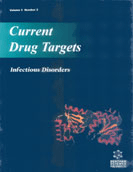Abstract
Specialized enteroendocrine cells are scattered within the gut mucosa and influenced by nutritional status. Released hormones are, besides other biological actions, involved in the regulation of food intake by mediating their information to brain centers involved in food intake regulation located in the brainstem as well as forebrain such as hypothalamic nuclei. Intestinal enteroendocrine cells produce a variety of gut peptides regulating food intake and were therefore the focus of many studies. However, recent evidence points towards a specific endocrine cell, the X/A-like cell, located within the stomach oxyntic mucosa as an important player in appetite control. Acylated ghrelin is the only known peripherally produced and centrally acting food intakestimulatory (orexigenic) peptide so far. Its major source of production is gastric X/A-like cells. Desacyl ghrelin originates from the same cell and has been recently implicated in the regulation of food intake as well. Moreover, nesfatin-1, a novel food intake-inhibitory (anorexigenic) peptide, has been identified in ghrelin-positive cells of the stomach. This suggests an important role for gastric X/A-like cells to regulate food intake. Obestatin was initially described as a ghrelin gene product with anorexigenic properties. However, consecutive studies were not able to reproduce those findings and therefore its role as food intake regulating peptide remains equivocal. Ghrelin interacts with various other intestinal peptides to regulate food intake and body weight which has to be taken into account when targeting single peptides as a potential drug treatment for obesity.
Keywords: Desacyl ghrelin, food intake, ghrelin, nesfatin-1, NUCB2, obesity, obestatin.






















